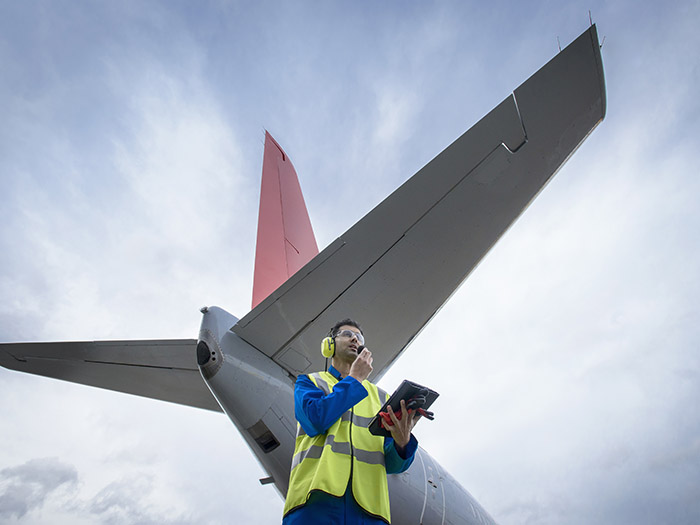Ebola in the Workplace
Ebola’s Impact on the Health Care Industry

Now that a second nurse at Texas Presbyterian Hospital in Dallas has been infected with the Ebola virus, the risk to U.S. health care workers has been thrown into the limelight.
“Health care workers are at more risk than any other worker,” said Ron Leopold, M.D., health outcomes practice leader for Willis North America. “But I think there is an overwhelming tendency for all of us and the national media to overblow the risk.”
The virus is highly contagious, but only through direct contact with an infected person. “That’s a very small number of health care workers in this country,” he said. “Being alerted to what’s going on but not alarmed is critical.”
“Being alerted to what’s going on but not alarmed is critical.” — Dr. Ron Leopold, health outcomes practice leader, Willis North America
However, as more doctors, nurses and other clinical staff are exposed to the virus, the potential spread of Ebola on U.S. soil could pose a considerable workers’ comp risk for the health care industry.
“What if doctors treating patients in the U.S. are exposed? For every doctor, you have multiple staff working beneath them. That could have a quick and dramatic effect on personnel at the hospital and the financial consequence would be large,” said Pete Reilly, health care practice leader at retail broker William Gallagher Associates.
In the case of nurses Nina Pham and Amber Joy Vinson, who both cared for Liberian Ebola patient Thomas Duncan at Texas Health Presbyterian Hospital in Dallas and subsequently contracted the disease, illness clearly arose out of the course and scope of employment.
Arguments could be made that breaches in safety protocol led to their exposure, placing fault on the nurses and precluding coverage. But given the CDC’s admission of mishandling its approach to Ebola safety training and not offering enough assistance to the hospital, that rationale may not stand up.
At a hearing of the House Subcommittee on Oversight and Investigations, CDC director Thomas Frieden even said, “While we do not yet know exactly how these transmissions occurred, they demonstrate the need to strengthen the procedures for infection-control protocols which allowed for exposure to the virus.”
Several of the nurses’ co-workers also said that they followed CDC guidelines and wore full hazmat gear while caring for Duncan.
“There are details about every case that would come to bear, but it all depends on the carrier, the policy and other things we can’t address until a scenario is presented,” said Eric Justin, M.D., chief medical officer at Lockton Cos.
Workers’ comp carrier and large health systems, which are typically self-insured, simply don’t have enough information to determine coverage at this point.
It’s tough to understand what all the risks are at this point.”– Dr. Eric Justin, chief medical officer, Lockton Cos.
“It’s a small numbers problem. It’s tough to understand what all the risks are at this point,” Justin said.
Even if few health care workers become infected, the impact on workers’ comp could be significant for any individual hospital because of the high costs associated with caring for a patient in isolation.
“You may not have to close or quarantine your emergency room, but certainly you’ve had to quadruple your order for some type of vaccine or other medications,” Reilly said. Additional expenses may be incurred for hazmat suits, the proper disposal of those suits, additional steps needed for disinfection of hospital rooms and equipment, and even public relations messaging that may be necessary to reassure the public that a facility is safe.
“Normal business services may be 50 percent more expense in this type of situation because you have to go through additional steps to comply with CDC protocol,” Reilly said.
It’s up to hospital risk managers to plan for the admission of Ebola patient, however unlikely, to ensure staff is up to date on safety protocols.
CDC Guidelines
The transmission of the disease on U.S. soil has sparked renewed vigor from the CDC, including clearer and more rigorous guidelines for the proper wear and removal of protective gear, and a plan to send larger, more experienced teams of experts to any hospital caring for an Ebola patient.
Initially, the CDC indicated that any hospital in the U.S. should have the essentials to treat Ebola on their own. The experiences of Emory Hospital in Atlanta and then Texas Presbyterian prove that assumption to be naïve and unsafe.
“In a very short time, mostly due to the situation in Dallas, we’re learning [about the virus] rather rapidly, and one sign of that learning is that the CDC announced that they will start to be much more assertive about providing not just teams to go wherever an Ebola case is confirmed, but larger teams that are experienced not just with working with Ebola but also training others to work with the isolation gear and decontamination procedures,” Justin said.
Most doctors and nurses are aware of the guidelines issued by the CDC and OSHA regarding protective gear, but many have likely not practiced them since early days of job training.
“Even people with experience are finding, ‘This isn’t so easy,’” Justin said. “They’re becoming aware of the need to actually practice them.”
Current CDC protocol also calls for any worker to be observed while removing protective gowns, masks and gloves to ensure that everything is done correctly.
Justin called this “buddy system approach” a necessary methodological step, which allows observers to both step in in a critical moment to correct a problem, and also record information to suggest process changes in the future.
The CDC has also backtracked on earlier assertions that any hospital can handle an isolation patient.
Future cases will most likely end up in one of the four larger, specialized centers that house their own biocontainment units, including Nebraska Medical Center in Omaha, the National Institutes of Health in Bethseda, Md., and St. Patrick Hospital in Missoula, Mont., along with Emory Hospital.
Third-Party Relationships
Health care risk managers should make sure to keep third party service providers informed about Ebola response plans and safety procedures.
The experience at Emory, the first U.S hospital to receive an Ebola patient, revealed shortcomings in the U.S.’s plan to manage the virus.
Several third-party vendors working with the hospital balked at the idea of dealing with any potentially infected materials.
Their waste removal company, for example, refused to haul away the high volume of waste generated by someone afflicted by the disease. A transport company would not take blood samples a few blocks away to be tested.
“People on the waste management side are a step or two removed from the clinical setting, so I can see why they’d be concerned,” Justin said. “The best thing to do to allay those anxieties is to have discussions between infection control and those companies, and also let them know of the procedures available.”
Having these third-party vendors on board not only help care for an infectious patient run more smoothly, but also mitigates the risk of a contracted worker making claims of negligence against a hospital.
“As part of your disaster recovery plan, you should be checking with those vendors and making sure they are going to respond,” said Deana Allen, SVP at Willis North America’s national health care practice. “These are the critical services we’ll need.”










